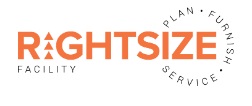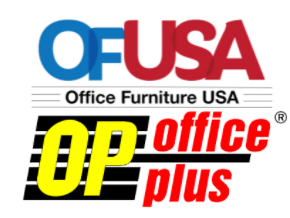Difference between Usable & Rentable Square Feet
When planning an office relocation, there are many terms you need to be familiar with when it comes to deciding on the best available office space to suit your company's requirements. It is important to recognize some of the key terms when searching for a new business office space.
Calculating the size of a potential office lease space is straightforward providing you are familiar with the terms usable square feet and rentable square feet. If you are not sure which one you are dealing with, you could make mistakes which will cost your company valuable time and money.
Usable Square Feet
The term 'usable square feet' describes the exact square footage of the commercial office space you're leasing, so it refers only to the facilities that your company will exclusively occupy. This includes areas such as office space, storage space, kitchen space and any bathroom facilities.
If the space you are leasing is contained within a business park, the usable square feet does not refer to any of the areas that exist outside of your private office space.
Rentable Square Feet
This term can be misleading because it not only refers to your exclusive office space, it also includes the areas which might be shared with other businesses within a business park such as entrance lobbies, meeting rooms, public restrooms and kitchenettes.
Even communal hallways can be included in the total rentable square feet. Rentable square feet is determined by calculating the usable square feet and adding a percentage based on the amount of common areas included within the building.
Comparing the two
When comparing leases that refer to both the usable square feet and the rentable square feet, the first thing you will discover is that there will be a significant difference in the amount of listed space as well as a price difference. Rentable square footage will come in at a much higher cost per month.
Being aware of the difference between the two types of square feet is detrimental to your business requirements. If you are not familiar with these two key terms, you could make the mistake of assuming the actual office space you are renting is much bigger than it is.
Always ensure you hire a tenant rep broker to guide you through the process and help you make the right comparisons of the both types of leasing quotes.
Use the Office Space Calculator to work out how much square feet your business needs to satisfy your operational and business requirements.
Planning an office move? Go the office relocation planning resource center
-
Start Planning Your Office Move
Wherever you are in your office move process Help Moving Office has the information you need to plan your office move properly.
Start Planning -
Access The Resource Center
With over 15 guides, checklists, tools & calculators the Resource Center has everything you need to plan, organize & manage a successful office move.
See Resources -
Office Relocation Services Directory
Looking for the right companies for your office move? Connect with independently sourced and pre-qualified vendors that are experts in your local market.
The Directory
Latest Tips
-
Creating a Stylish Office with Second-Hand Conference Tables
In today's business world, creating a stylish and functional office space doesn't have to break the bank. One of the smartest and most sustainable choices you can make is to invest in budget office furniture, specifically second-hand conference tables. Not only do they provide a professional look and feel, but they also come at a fraction of the cost of new furniture. Here’s how you can transform your office space with second-hand conference tables and where to find the best deals
Read Article -
Embracing the Spirit of Connection: Workplace Trends and the Paris 2024 Olympics
As we anticipate the 2024 Paris Olympics, a celebration of unity, excellence, and the indomitable human spirit, it's fascinating to observe how these themes resonate with the evolving dynamics of today's workplace.
Read Article -
OFUSA Moving Services
Moving office furniture in Las Vegas requires prec...
Read Article






